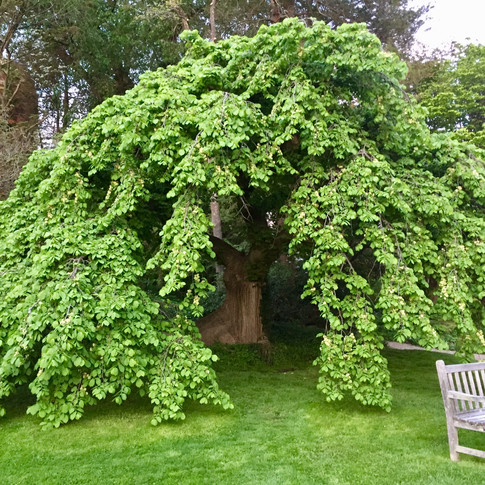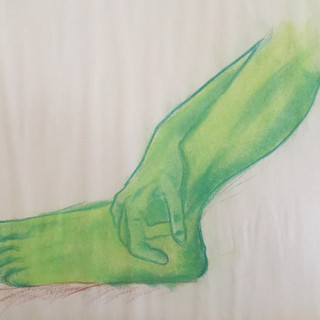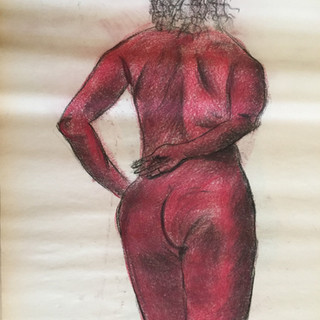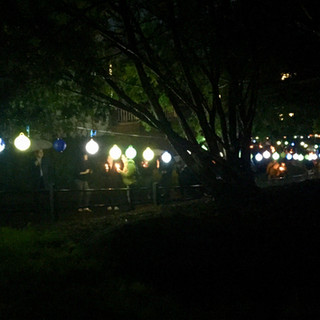"Welcome to your Intellectual Home": My Smith College Reunion
- Raji Writes

- Jun 24, 2018
- 8 min read
"Welcome to your intellectual home!" These were the warm words of President Kathleen McCartney as she welcomed an auditorium filled with alumnae, myself included, returning to the stunning Smith College campus for our reunions.
Her words struck a chord and brought a rush of memories.


More than 30 years ago, I arrived at Smith, a foreign student from Calcutta, India. While English was my first language, everything else was new, unfamiliar. The American accent. The idiom. For example “How are you doing?” Which triggered many questions. Such as, what was the purpose of the word “doing” in that question? Wouldn’t it suffice to simply say “How are you?” The food. Broccoli, which I had never seen before! Trays of large uncut green trunks with flowery green branches tufting out, steamed. Oh God, they eat trees here, I remember thinking in dismay, my heart sinking. And the surge of anxiety that inevitably accompanied the sighting of something unfamiliar in the dining room, where the vegetarian options were limited. “How does one eat this?”
But in the classroom, I was at home. My classes were invigorating, my teachers were inspiring. It was truly my intellectual home.
One day in the fall, after we had received the results of our first set of exams, I remember having dinner with my fellow Oak House residents in the Parsons house dining room. The students discussed their grades in various subjects: government, sociology, biology, literature, calculus. Many seemed overwhelmed, exasperated at all the work they had done for apparently not great grades. “No one had better have gotten straight A’s!” Someone exclaimed.
I was quiet. What are “straight A’s” I wondered, a little confused. “How are they different from “A’s”? I asked my friends Melissa and Jennifer. They looked at me.” Did you?!”
“Well,” I replied, “I got two A’s and two A-'s, so not exactly…” Their eyes widened as I looked at them. “Oh, come on!” They groaned. “She got straight A’s.” And they announced to the rest of the room, “Raji got straight A’s!” The considered look I got from the room was tinged with more than a little respect. I was embarrassed at the attention but pleased at the new-found respect.
In May 2018, I went to Smith for my 30-year college reunion. I had been back only once before, soon after graduating. Decades have gone by, and it has remained the experience that defined my life in America. Founded in 1871, Smith College “educates women of promise for lives of distinction, developing leaders for society’s challenges.” It is the largest women’s liberal arts college in the US, with young women attending from nearly every state in the US, and 62 other countries.
In Northampton, MA, where Smith is, I was grateful to meet again Flora Majumder, who with her late husband Sanat, welcomed some of us lost students from India into their home, fed us home-cooked meals, and knit us wool hats. We called them Mama and Maima, uncle and aunt. It was lovely to be in their home again, and remember Sanat Mama.

Also, to my delight, across the street from Flora now lives my old friend James Lowenthal, now Professor of Astronomy at Smith, with his family! We all spent an afternoon laughing, catching up and remembering.
The first night at Smith, soon after checking in at the Alumnae House, I found my way to Scales house, our class Reunion headquarters where most of my class was staying. Within minutes, I saw a couple of women I knew and was glad to speak with them.
Later, I walked over to a dinner for all classes which was held at the beautiful conference center overlooking Paradise Pond. Paradise Pond! It still offered the most beautiful of vistas, serene, picturesque.
I remembered the time my dear friend Paska pointed at some pretty blue flowers on the lawn near the pond when we were ambling around campus. “What are they?” I asked. “Forget-Me-Not” she said. And then bent down, picked a few and presented them to me without a word. "I never will," I said. And neither of us has. Even today, our conversations are easy, yet deep, almost as though no time has passed since the last time we spoke, despite the distance that separates us and all that has happened in our lives.
After dinner that first night back, I walked around to reacquaint myself with the campus. The hill near Chapin house, which led down to Sabin-Reed Hall, then the Science Center. On some winter days when the campus was covered in snow, I would look around self-consciously, give up on even trying to walk down without slipping and falling, sit at the top of the hill and just slide down the snow.
The new science building, Ford Hall, where I later attended a reception for the biology and biochemistry departments, is an impressive glass and steel structure with beautiful laboratories within. I met Prof. Stylianos Scordilis, Professor of Biochemistry and my mentor, as well as Prof. Steve Williams, Prof. of Genetics, whose daughter was graduating from Smith.
Neilsen library is currently a huge hole in the ground, soon to be transformed into a magnificent new contemporary library by architect Maya Lin.
Oak House, on Elm St. at Henshaw Ave, where I lived, was no longer there, having been demolished soon after I left. The Friedman Apartments, where Paska had lived one year, were now in a different part of campus. But still there, nearby, the large twin Cutter and Ziskind Houses, and Parsons House where us Oak House residents would walk over for our meals.
And the botanical gardens, as glorious as ever.
By the entrance is a sculpture “Great Blue Heron” by Elliott Offner who was Chair of the Art Department when I was there.
I took an art class with Mr. Offner during my last semester at Smith. We drew objects, live models, portraits, drawings with perspective. I remember what a great teacher Mr. Offner was, and how fond I was of him. He was kind, good-humored, and had a wonderful smile.

He walked around as we drew in class, observing our work and providing feedback on our technique. At the beginning of every class, we would display our homework assignments, and students were invited to comment on one another’s work. The class was inspiring and nourishing for my mind and spirit. Here is some of what I drew.
At the class drew to a close, at the same time that my tenure at Smith was winding down, I drew a somewhat obvious depiction of my impending journey away from Smith, with the iconic Grecourt Gates.

I regret that I did not see Mr. Offner again after I left Smith. There was a time when I was struggling in graduate school. Overwhelmed that I might not get my experiments to work well enough to complete my dissertation, worried that all my time spent doing research might be in vain, I remember drawing a card, and writing in it to Mr. Offner. Studying with him was the most comforting, fulfilling thing I could think of at that time. If science failed me, I thought, art surely wouldn’t. Along the lines of Wordsworth’s words, “Nature never did betray the heart that loved her.”
Today, I don’t recall if I ever sent that letter. I did take a leave of absence and went home to my parents, licking my wounds. With them, I went to visit my brother in Papua New Guinea where he then lived. It was restorative and rejuvenating. When I returned to graduate school, everything I touched worked.
Elliot Offner died in 2010. As the light faded that evening, I stood looking at the heron, remembering Mr. Offner. I mourned his loss and thanked him for everything he had taught me. You can view his art at this website created in his honor: http://www.elliotoffner.com/
The campus is as beautiful as ever, and the women, as inspiring as I remembered. One of the most intelligent decisions I took when leaving Smith was to sign up for a lifelong subscription to the Smith Alumnae Quarterly. Every issue is a joy and an inspiration. Years after the time of Gloria Steinem, Betty Friedan, Ann Richards, Julia Child, Sylvia Plath and countless other women who left indelible marks on the world, each issue brings news of more Smithies changing the world. I had read, just a few months ago, about Erin O’Shea, my lab partner in Molecular Genetics, with whom I isolated DNA for the first time. She is now the President of the Howard Hughes Medical Institute, one of the largest private funding organizations for biological and medical research in the United States! She is the first woman President of the HHMI.
And Jennifer Baskerville-Burrows, also in my graduating class, is the first African American woman Bishop of the Episcopal Church.

Jennifer held a devotion on Saturday morning at 6:30 AM. I was very keen to attend, having read about her in the Smith Alumnae Quarterly. After being buffeted by many changes in life over the past several months, I was craving the groundedness of spirituality. Still on California time, I managed to get up, get dressed and get downstairs, just a little late.
There were about a dozen women there, seated in the circle in the lobby of Scales house, our Reunion headquarters where most of us were staying. As I was late, I headed to a chair little removed so as not to disrupt the proceedings, but immediately, everyone moved and made room for me to join the circle. I felt welcomed, despite being late.
I had missed most of Jennifer’s opening remarks/introduction, but I was in time to note that she was speaking about thresholds. We are at a stage in our lives, she said, where we are at a threshold. We may be exploring a new career. There may have been changes in our personal lives. What lies ahead may be exciting and inviting. Or, we may be looking across the threshold with fear. She invited each of us to share how we felt at our respective thresholds.
Many moving stories emerged, of illness, death, new careers, of discrimination in the workplace, feeling at sea after children grew up and left home. One woman spoke of her journey to find her birth parents, and how genetic testing and genealogy suggested some potential avenues, but no clear answer had been found yet.
When it was my turn, I found myself quite emotional. And yet, in a safe place. And I realized that despite all the unfamiliarity and newness even when I first arrived, I always felt safe at Smith.
I spoke of what a defining experience Smith had been for me, for all of us. I told the group that after I left, I went to graduate school, completed a fellowship, worked at a few companies, and four years ago started my own consulting practice. Along the way, I got married and had a child. Recently, I got divorced, and I’m now effectively a single parent. To cope with all these changes in my life, I decided to try and realize the deferred dream: I started writing again. I also wanted to reconnect with people who played an important role in my life, who are important to me. And for this reason, I wanted to come to Reunion to see Smith again, "to see all of you, and to see the amazing women you have become, whom I am so delighted to read about in the Alumnae Quarterly. I am so honored to be with you all."
I found myself in tears, and someone passed me a tissue. Later, Jennifer and some others said to me, “I am so glad you came.” So am I, sisters, so am I.
The rest of the weekend included a visit to the Art Museum, class dinners. At the magnificent Ivy Day Alumnae Parade, alumnae marched with their classes and welcomed the graduating seniors (holding red roses) into the world. The most magical moments must be at Illumination night, where the central campus is lit up with Chinese lanterns and seniors carry lighted candles along the walkways. Here are some pictures. Viva Academia, Viva Professores!































































































































I would love a joint visit! We will walk by Paradise Pond, and exchange forget-me-nots. 💕
My dear Raj, I just saw that you wrote this - thank you for taking me again with you in your journey to visit Smith. The pic of Sabin-Reed Hall building reminds me of the lots and lots of time we spent together - studying, musing around, and just being... I took art class too from Mr. Offner! And, of course, all the courses with Dr. Scordilis and Williams. Ah... so many memories....As we had playfully talked about a while back, let's go there again together... :-)